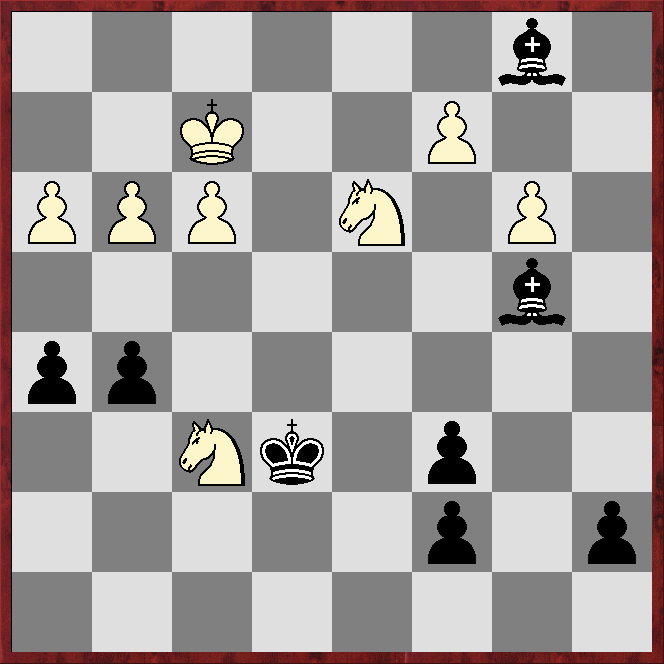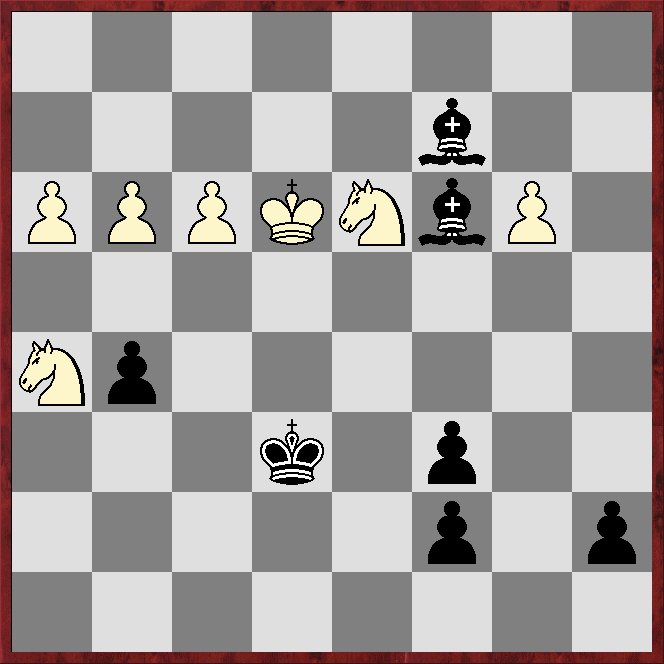Spanish Berlin
1.e4 e5 2.Nf3 Nc6 3.Bb5 Nf6 4.Qe2!?
This is fourth-most popular behind 4.Nc3, 4.d3 and especially 4.0-0 in ChessBase's 2023 Mega database, but it has been played by top grandmasters and scores a very good 60%.
*****
*****
*****
*****
4...d6
This is popular, but the mainline in Mega23 runs 4...Bc5 5.c3 0-0 6.0-0 Re8 (6...d6 is almost as popular, and has been played by Garry Kasparov) 7.d3, after which Black is at least equal, according to Stockfish15.1 and Komodo14.1.
5.d4 exd4 6.Nxd4
6.e5!? can lead to sharp play, eg 6...dxe5 7.Nxe5 Bb4+!? 8.c3 0-0!? 9.Bxc6 bxc6 10.cxb4 Re8 11.0-0 occurred in Miguel Quinteros (2555) - Lubomir Kavalek (2545), IBM-17 (Amsterdam) 1977, with an unclear position (0-1, 29 moves).
6...Bd7
*****
*****
*****
*****
7.Bxc6!?
The engines slightly prefer capturing with the knight.
7...bxc6 8.e5!?
The strongest players to reach the position have castled or played 8.Nc3.
8...dxe5 9.Qxe5
*****
*****
*****
*****
9...Qe7
All three games to reach the diagrammed position in Mega23 saw the text, but the engines suggest an apparent novelty, 9...Be7!? Greek grandmaster Spyridon Skembris, who is available to go over players' games at this tournament, said the latter move is faulty because Black loses the bishop-pair after 10.Nf5, but the engines point out that 10...Bxf5 11.Qxf5 Qd5 practically forces 12.Qxd5. Then 12...cxd5 leaves Black with a slight lead in development and the only pawn on the centre two files, but with three pawn-islands against White's two.
10.Bf4 0-0-0 11.0-0
*****
*****
*****
*****
Black has the bishop-pair but a shattered queenside, the latter meaning White has the safer king. However the last point will almost certainly prove irrelevant as Black can immediately get queens off the board. The engines reckon Black is slightly better.
11...Qxe5 12.Bxe5 Ng4 13.Nf3 Nxe5 14.Nxe5 Be8 15.Nc3 f6
On 15...Rd2 I intended 16.Rac1 followed by expelling the black rook.
16.Nd3 Bg6 17.Rfd1!?
This looks strange, at least at first glance, but it leaves the queen's rook free to defend c2. The engines are unsure, fluctuating over which rook should go to d1.
17...Bd6 18.g3 h5 19.h3
17...Bd6 18.g3 h5 19.h3
The engines are not keen on this, preferring 19.h4 or, now the black king's bishop blocks the e file, 19.Re1.
19...Bf5 20.Kg2 g5 21.Re1 Rhe8 22.Rxe8 Rxe8 23.Re1 Rxe1 24.Nxe1
*****
*****
*****
*****
White's knights will struggle to find good outposts, but White has the better pawn-structure and does not have to cope with rival pawn-majorities. Nevertheless the bishops have open lines, and the engines agree Black is slightly better.
24...Kd7 25.f3 Bg6 26.Ne4 Be7 27.Nd3 Bf7 28.Kf2?!
White may just be able to get away with this (it was a complete oversight by me), but simpler is 28.b3.
28...Bxa2 29.b3 Bb1 30.Ne1 Bb4 31.Nxf6+ Ke6
*****
*****
*****
*****
32.Nd3?
I rejected 32.Nxh5 Bxe1+ 33.Kxe1 Bxc2 34.b4 because of 34...Kd5, missing that White gains a tempo with 35.Kd2, and if 35...Bg6 then 36.Nf6+ is good enough for complete equality, according to the engines, as 36...Kc4?! runs into 37.h4. However 34...c5!? is promising for Black, so the engines suggest offering the b pawn, for example by 34.f4!?, again claiming complete equality.
*****
*****
*****
*****
32...Bc3?
Both ...Be7 and ...c5 seem to be winning, eg 32...c5 33.Ne4 Bxc2 34.Ndxc5+ Bxc5+ 35.Nxc5+ Kd5, when Black has bishop-versus-knight with rival pawn-majorities. The engines prefer 34.Ke3, but 34...Kd5 is strong, eg 35.f4 gxf4+ 36.Nxf4+ Kc6 37.Nd2 (if 37.Nxh5 then Bxb3, after which the a pawn is too fast) a5 38.Nxh5 c4! 39.Nxc4 Bxb3 with the usual consequences for knights against bishops when there are rival pawn-majorities.
33.Nxh5
Perhaps better is 33.Ne4!?
33...Bxc2 34.Ke3
*****
*****
*****
*****
34...Kd5
This hands the advantage over to White, but in a way that is hard to spot.
Terrible is 34...Bxc3?? 35.Nc5+ etc, but 34...Kd6 seems to be enough for a slight edge.
However 34...c5! creates major problems for White, eg 35.Nxc5+ Kd5 36.Na6 Bxb3 37.Nxc7 Kc4 38.Na6 (stopping ...a5, at least for the moment) Kb5 39.Nc7+ Kc6 40.Kd3 (40.Na6 Bc4) Bb2 41.Na6 Kb6 42.Nb4 a5 43.Nc2 Bf7 with ...Bg6(+) to come. There are many alternatives along the way, but all seem good for Black.
*****
*****
*****
*****
35.f4
This looks natural, but there is 35.Nf6+!, which more-or-less forces 35...Bxf6 36.Nb4+ Ke5 37.Nxc2, when the engines reckon White, if anyone, is better.
35...Bd1?
As grandmaster Skembris pointed out, it is time to take the b pawn, which holds up Black's queenside pawns. After 35...Bxb3 36.fxg5 Bd4+ 37.Kd2 the engines reckon Black may have a tiny edge.
As grandmaster Skembris pointed out, it is time to take the b pawn, which holds up Black's queenside pawns. After 35...Bxb3 36.fxg5 Bd4+ 37.Kd2 the engines reckon Black may have a tiny edge.
36.fxg5! Bd4+ 37.Kd2 Bxh5?
Black is equal after 37...Bxb3, according to the engines.
38.Nf4+ Ke4 39.Nxh5 Ke4?
This makes it easy for White, as does 39...Kf3? 40.g6 etc. Best is 39...Be3+, although 40.Kc3 Bxg5 41.g4 looks promising.
40.Nf4 Bf2
Not 40...Kxg5? 41.Ne6+ etc.
41.g6 Kf6 42.h4 Kg7 43.Ke2 1-0
Black has no defence against what has become a white kingside pawn-avalanche.









No comments:
Post a Comment